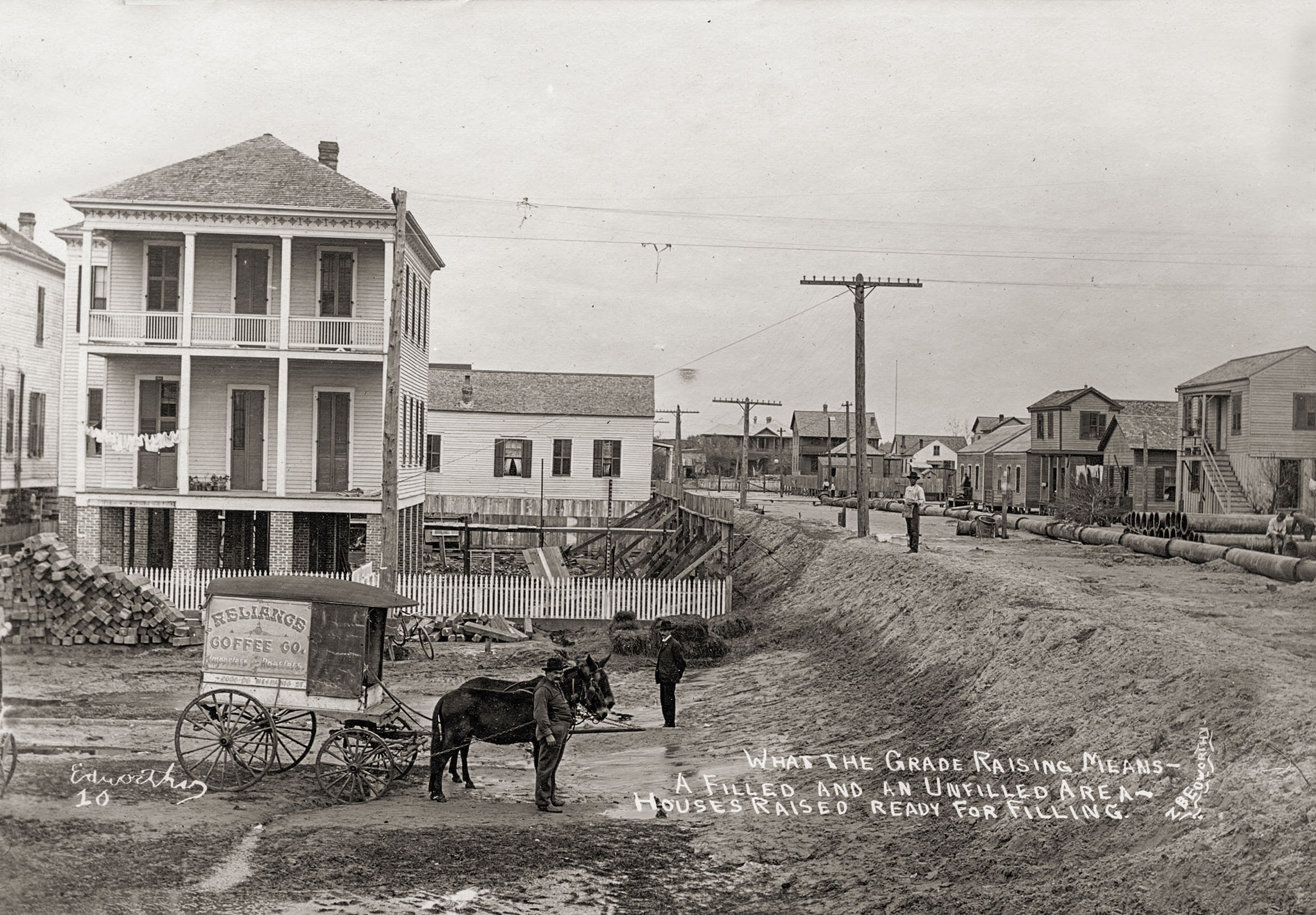
In the aftermath of the devastating 1900 hurricane, Galveston faced the arduous work of rebuilding. Most famously, the town began constructing its signature seawall in 1902. Another crucial response involved raising the elevation of some 500 city blocks anywhere from 8 to 17 feet. To accomplish this herculean task, engineers enclosed two- to three-block sections with earthen levees, and workers using jackscrews and stilts manually lifted every structure, fence, streetcar track, and utility and water pipe. More than 2,000 structures were lifted as part of the grade raising, which required more than 15 million cubic yards of sand. Some of those buildings are still standing, such as St. Patrick Catholic Church on 35th Street, which was raised 5 feet using 700 jacks. The last cubic yard of sand was shoveled into place on Aug. 8, 1910. Galveston had risen.
Know of any fascinating vintage Texas photographs? Send copies or ideas to [email protected]








